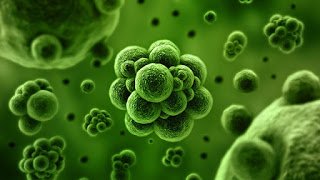Significance of dissemination of plant pathogens by seed
Seed transmission is the act of dissemination of pathogen and inoculation of host by
the pathogen through seeds for the preparation of disease from one generation to another generation.
Plant pathogen can be transmitted through various agents. Among them seed is the
most efficient carrier of pathogen. The significance of transmission of pathogen
through seed are discussed below
1.Dormant conditions: The dormant conditions of the seed is highly favourable for
the survival of pathogens in it. As a result, pathogen will remain alive in seed for long
time.
2. Small amount: A small amount of seed or its structure can able to carry pathogen.
3. Virgin soil: Virgin soil may be inoculated through infected seeds and can persist
long time.
4. Intimate association of host and parasites: The intimate association of host and
parasites both in space and time, provides maximum opportunity for the earliest infection of the emerged seedlings.
5. Germination failure of the seed: Infected seeds fail to germinate or the young
seedlings emerging from the infected seeds die after germination resulting
pre emergence death, damping off, seedling blight.
6. Providing primary sources of inoculum: It provide primary sources of inoculums
in the field. The primary inocula grow, germinate and multiplying on the infected dead seeds and seedlings. Later on these inocula may be transmitted to the healthy plants of some or neighbouring field and can cause disease often in epidemic form.
Not infected → germinate multiply → some plant infected → neighbouring field (all infected)
7. Providing numerous foci of inoculum: It provides numerous foci of primary
infection. Thus rendering the crop of the entire field vulnerable to the attack of the
pathogen.
8. Pathogen can be spread over a long distance through seeds: A pathogen can be
spread over long distance through infected seeds. On this way a new or unknown
pathogen or a virulent race of a known pathogen can be introduced from one village toanother village or from one distance to another distance or even from one country to
another.
9. Resistant cultivars converted into susceptible: Seed borne inoculum obtain the presence of a virulent race/strain of the pathogen along with the seed. Thus new aggressive pathological races of pathogens maybe introduced with the seed. As a result, the varieties of resistant to cultivate to local races of the pathogens may become
susceptible to the newly introduced aggressive races.
Condition on which transmission of pathogen depends
1. Growth stage of the host.
2. Paths of entry of pathogen into the plant or seed.
3. Weather conditions.
4. Flowering period of the host.
5. Localisation of pathogen into the seed.
All plants are not seed borne; Why?
All pathogen are not seed borne because seeds are protected by almighty Allah.
However, there are following reasons behind this
1. Many pathogen cannot invade ovule through plasmadesma connection.
2. When ovule is invaded by pathogen, the ovule may get shocked and that is why the
seed may die. i.e. abortion occurs.
3. Just after fertilisation, the cells of embryo divide so quickly that the pathogen may
die.
Entry point of seed infection
A. Infection directly from the mother plant. B. Infection from outside.
a) Intraembryal infection through stigma.
b) Extraembryal infection through stigma.
c) Ovary wall, pericarp and integuments of seed coat as path of infection.
d) Flower and fruit stalk as path of infection.
Why Seed borne diseases of crop are important?
1. Seeds can carry these pathogens through time and space.
2. Plants can hardly escape seed transmitted pathogens.
3. Most of the major plant diseases are seed borne.
4. Seeds may carry dangerous pathogen to a region or country where it was not there
such introduction may become catastrophic.
5. High economic significance.
